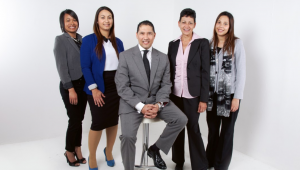There are a multitude of ways, and just as many reasons, to design a positive and unique employee experience. Developing a strategy to create an employee experience should takes into account the physical environment your employees work in, the tools and technologies that enable their productivity and learning to achieve their best at work. All of this is part of continuously evolving our employee capabilities. The Future Workplace and Beyond.com study entitled “The Active Job Seeker Dilemma” found that 83% of HR leaders said “employee experience” is either important or very important to their organization’s success, and they are investing more in training (56%), improving their work spaces (51%), and giving more rewards (47%).
Companies are also forced to focus on creating a compelling employee experience as the war for talent heats up. With unemployment rates at less than 2% for 25+ year olds with college degrees, the experience you are offering becomes more important than ever. Mercer predicts that 90% of employers anticipate more competition for talent, especially in India, North America and Asia. So, making the workplace an experience allows companies to embed their culture and values in the workplace and use this to their advantage.
Branding
Define your employment brand. Just like a company brand that helps customers understand who you are, how you act, and how you differentiate, companies also have an employment brand, whether it is conscious or not. It’s best if your employment brand is created consciously. Define your employee brand and deliver on your promise. Be sure that if your recruiters are promising a fun-filled work environment, the new employees won’t find drudgery and old technology awaiting them.
Work Space design
Most workplaces are “designed mostly for extroverts and their need for lots of stimulation.” Introverts are highly talented individuals with a very different set of needs and characteristics. So, companies should ask, “How can we accommodate both our introverts and our extroverts in our work spaces?” Spaces should be designed to allow employees a choice of where and how they work. Some may choose high cube walls, where they can recoup form the pressures of interacting with others all day. Others may choose a very open environment where they are bombarded by noise, chatter and stimulation. Both types of employees have much to offer but will be more highly engaged if allowed to meet their individual needs.
Free to Share
Gallup’s data revealed that just three in 10 U.S. workers strongly agree that at work, their opinions seem to count and matter. However, they found that by moving that ratio to six in 10 employees, organizations could realize a 27% reduction in turnover, a 40% reduction in safety incidents and a 12% increase in productivity. Reason enough to conduct regular Pulse Surveys on a variety of topics, ensuring that you feed back the results and the follow up action plan.
Trust in Leadership
Little else matters to employees if they don’t trust their leadership and the leadership of the company. In the old adage “actions speak louder than words” we need to say what we do and do what we say. Trust is built a little at a time over a long period of time yet can be destroyed very rapidly. Employees know when you truly care about them and their lives in and out of work.
There is no magic to creating an employee experience. It’s all about understanding what your employees want and need and then finding a way to consistently deliver.
